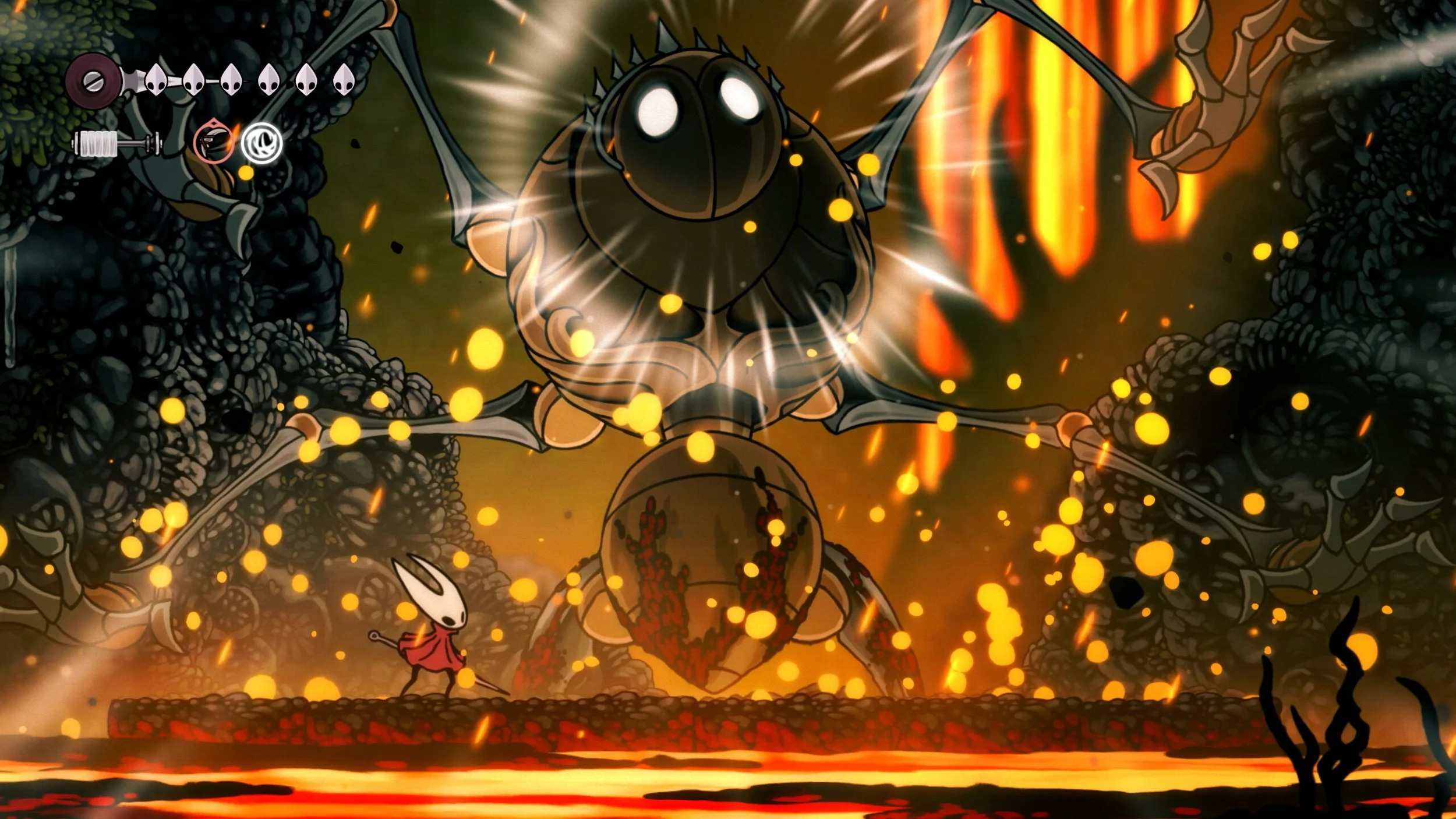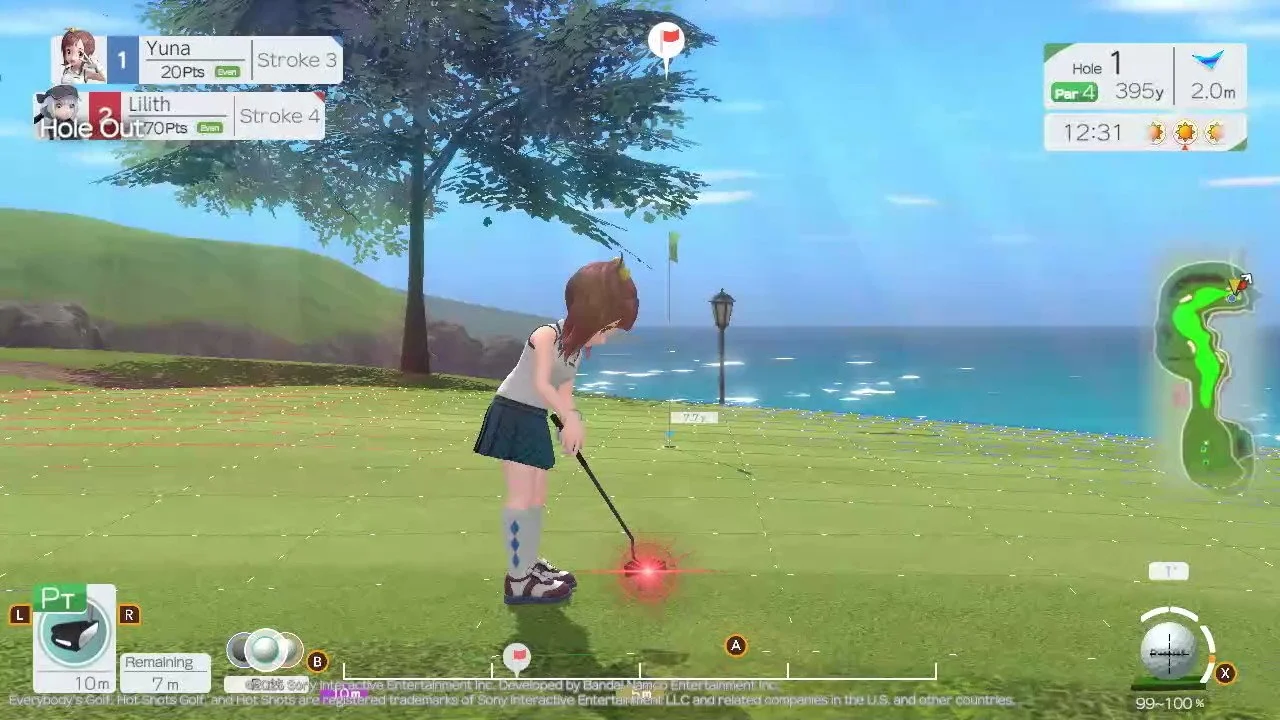Hollow Knight: Silksong Impressions After 20 Hours - A Matter of A Bug’s Life (Or Death)
/Well, Team Cherry’s long-awaited release has finally graduated from development hell. I had a minor existential crisis back in August when they announced that the game would be coming out on September 4th, with just two weeks’ notice. I didn’t have any time blocked out for Silksong, but I knew that the sequel to one of my favorite games of all time just couldn’t wait. We didn’t know much about it aside from a years-old demo, but now it’s actually here in all its glory, and it is truly a thing to behold. Instead of having the Knight as a protagonist, we’re now in control of his mysterious sometimes-ally, Hornet. Her outing is different in more ways than one, but like a premium plushie, Silksong is, carapace to core, cut from the same silk, mostly for the better.
I’m over halfway through Silksong at the time of writing, and I have many thoughts on it. For anyone who hasn’t played the original Hollow Knight, what you can expect is a pretty clever combination of the Metroidvania, Soulslike, and platforming genres, with challenging labyrinthine tunnels peppered with gorgeous backdrops, deadly foes, and brutal boss battles. You’ll drop essential currency (rosaries) on death and respawn at benches, where you can adjust your loadout accordingly before hopefully recovering your rosaries. There are multiple loadouts (Crests), upgrades for your Crests, fast-travel points, skills to unlock, secrets to uncover, side-quests to complete, bug people to help, and bosses to die against, over and over, until you master them.
Jump, air dash, wall jump, pogo, attack. Repeat ad infinitum…
But the bosses are only half the challenge. If you thought platforming in Hollow Knight was tough, Silksong kicks it up a notch, with new fundamental movement buffs, such as ledge-grabbing and the ability to cancel out of a ledge grab directly into a jump. Hornet also jumps higher and thus has more variation in the height of her jump based on how long you hold down the button, which is pretty awesome.
Silksong has sections that feature a lot more pogo platforming, where you’ll have to attack in mid-air to bounce off of buds and enemies, often with spike pits underfoot. Perhaps the biggest change you’ll notice in the early game is that Hornet’s downwards mid-air slash jets her down diagonally based on which direction she’s facing. This can also be used to attack, then bounce off of enemies, but it can feel finicky, and not everyone is able to adapt. Thankfully, there are two other Crests (the Wanderer’s Crest and Reaper’s Crest), both unlockable fairly early on. They grant more straightforward slashes that arc downwards. Crests have different inherent abilities, their damage from multiple attacks scales differently, and they have different allotments for tool slots as well. Reaper has a slower and somewhat clunkier moveset, while Wanderer is quicker and almost exactly reminiscent of Hollow Knight’s slashes, but with shorter range.
Another big change is that Hornet has the ability to unlock sprinting (and an air dash) much earlier than the Knight did in Hollow Knight. Hornet’s dash is great at covering well-trodden ground, and she can attack out of it, but it has its drawbacks as pivoting out of a dash is not instantaneous.
Precision Strikes are fine, but when you have a limited FOV…
Combat-wise, it first appears that Silksong doesn’t reinvent the wheel, as the emphasis is still on careful timing and spacing of quick slashing attacks. However, there are a lot of intricacies that differentiate Hornet’s style and options from the Knight’s. Instead of the simple and effective badge system from Hollow Knight, in which you could choose from a pool of various tools, Silksong divides tools into categories. Blue tools are more for exploration, red tools are damage-dealers, and yellow tools are often modifiers. You are very limited in the amount and type of tools you can equip, plus you’ll have to spend rare items to upgrade each individual Crest to support more tools. This makes it costly to truly experiment with builds. What’s more, the amount of tools that you can use per Crest is highly limited by the Crests themselves. Some default to only having one or none of any specific type of tool. It absolutely limits the amount of experimentation that you as the player can do, and I am not a fan of this system at all. The original Hollow Knight also seemed to have a larger variety of badges and modifiers.
What’s more, the offensive tools use a currency called shards, which you collect from downed enemies, and can later on buy with rosaries (the game’s primary currency). Shards come and go quickly when you use tools, so if you’re not careful, you can burn through them pretty quickly. I recommend learning a boss as thoroughly as possible before attempting to use offensive tools, so as to save yourself the pain of constantly running out of shards. I don’t mind the system, but you run through a lot of rosaries and shards. I think that the game’s economy could generally be more forgiving.
In terms of the level design, I am of two minds with Silksong. The art direction and visuals at first glance seem to be straight-up improved from Hollow Knight. By and large, the game is more beautiful and ethereal than its predecessor. But it’s also slightly tougher to appreciate the grandeur, as Silksong darkens many more environments than Hollow Knight, employing the use of a frustratingly small, vignetted spotlight on Hornet to light up her immediate area, while leaving the rest of the background in shadow. It’s like a vignette centered around your character, making it hard to see what’s around you. This isn’t just a problem in tricky platforming sections. It extends even to boss battles, such as Moorwing, in which you must nimbly dodge multiple moving projectiles as well as a sweeping, flying boss. Consequently, the game is difficult to play in anything but the perfect lighting conditions, and even then, you have to guess at what’s happening on the opposite side of the screen. This is not Dark Souls where you have a third dimension to move through, as there’s only so much space to escape to at any given time. Hornet has great movement options, but not being able to see the whole screen can be absolutely frustrating.
Perfect performance, but mixed feelings on the music
Hollow Knight Silksong runs at either 4K at a crisp 60fps or 1080p at 120fps on Switch 2. No noticeable hiccups make for a silky-smooth gameplay experience. The game takes full advantage of HD Rumble, which feels excellent on the Switch 2 Pro Controller.
Regarding Christopher Larkin’s score for the game, nearly all of the atmospheric environmental tracks are excellent. The Choral Chambers theme, for one, is a masterpiece. But when it comes to the music played during the game’s many intense fights, it’s very hit and miss. Most of the boss themes have simple and repetitive arrangements that can become grating, especially after multiple attempts, with frantic string instruments adding most of the tension. It’s not his best work, especially considering how high quality his work was on the original Hollow Knight’s soundtrack.
Sound-wise, the sound effects, mixing, and sound design in general stand out as big positives. However, I really wish that Team Cherry had offered the option of turning off voice lines, as a lot of the voices can become grating, with odd-sounding moans and wails. They are all tied to the sound effects. At least you can turn off Hornet’s voice, which I immediately did, as she has far too many vocalizations.
Your mileage may vary, but this is not a game for the faint of heart, or the impatient.
There’s a lot of things that bug me at a fundamental level about Hollow Knight: Silksong. It is clear that Team Cherry stuck to their guns and sought to deliver a game that plays how they want it to play, not necessarily delivering the kind of more straightforward sequel that players of Hollow Knight may have wanted. For one, everything feels like an uphill battle. There are often long runbacks. Boss runbacks can be absolutely brutal. I haven’t reached it yet, but apparently there is a section called Bilewater that is just beyond ridiculous in what it asks from the player.
Also, the game has way too many flying enemies and environmental hazards. Past a certain point in the game, it is almost a guarantee that progression will require you to scale annoying vertical sections where flying foes will harass you in the midst of your jumps, and if you aren’t able to hot-foot it from platform to platform, it’s into the spikes/lava/poison for you. It is not only slow-going and tedious to deal with the game’s many flying foes, but there are times where you’ll be struggling through a gauntlet only to have to deal with a boss at the end of it.
As far as the bosses go, they are mostly excellent. Some err on the side of being too easy or too tough, but there is usually a solution, and you will need to have patience and consistency to win. Unfortunately, if you’re anything like me, you’ll be banging your head against them over and over again to try and master the timing and openings, all the while struggling to find a safe spot and time to heal. Some bosses, like The Last Judge, are frustratingly speedy. Even so, I would say that the bosses are far and away the highlight of this game.
I beat all of Hollow Knight. Pretty much 100%ed the base game and DLC. Same goes for From Software’s Souls titles. I am no stranger to the Metroidvania and Soulslike genres. With that said, the general level of challenge in Silksong often feels excessive. The closest thing I can compare it to is Demon’s Souls, in terms of how unfair it feels to have to keep wasting away the precious hours of my life on needless runbacks.
Let’s just say that while I appreciate the craftsmanship involved on all levels, I personally stopped having fun with Hollow Knight Silksong a while ago. I am playing it because I want to finish it, but unlike Hollow Knight, I don’t think that this is a title I’ll be revisiting anytime soon. The only thing I feel after beating bosses is relief, not catharsis. Maybe others will disagree with my assessment, but Team Cherry’s latest masterpiece, an indie tour-de-force that’s a no-brainer to pick up, especially at $20, has nevertheless all but broken my spirit.
About to start a run of Hollow Knight: Silksong? We have a beginner’s guide that covers all that you need to know during the first sections of the game.
About the Author - Joseph Choi
Filipino-American gamer, professional shepherd and farmer, author, and filmmaker/videographer living in Central California. First consoles were the Game Boy and Sega Genesis, and I've been gaming since then, with a focus on Nintendo and Sony consoles.








If you can get past Once Upon A Katamari's sticky controls and a general sense of deja vu, the many time periods, customizable cousins, unique challenges, and features make even a decades-old formula feel fresh again.